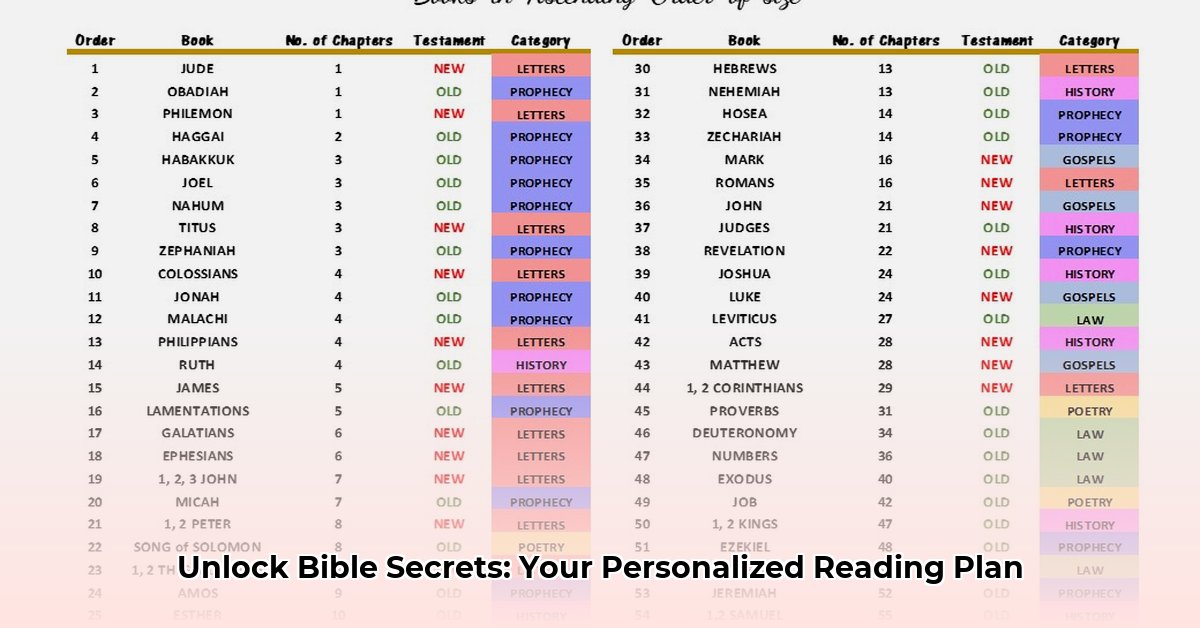Embarking on a journey through the Bible opens a gateway to profound stories, timeless wisdom, and spiritual insights. The beauty lies in the myriad of approaches—there’s no rigid “right” way. For more on Jesus’s life, see this helpful resource: Jesus’s story. The most effective method is tailored to your individual learning style and spiritual aspirations. Let’s explore these pathways to craft a Bible reading plan that resonates with you, fostering genuine spiritual growth and a closer connection with God’s Word.
Three Transformative Paths: Canonical, Chronological, and Thematic Bible Study
Before turning the first page, consider these three popular approaches to Bible reading: canonical order, chronological plans, and thematic studies. Each offers a unique lens through which to view scripture.
1. The Canonical Route: Embracing the Traditional Order
The canonical approach follows the traditional arrangement of the Bible: the Old Testament leading to the New Testament. This is the order authors intended. Reading in this order is akin to reading a book from beginning to end as it was presented. It provides a structured, linear experience that showcases the gradual unfolding of God’s plan.
- Pros: Establishes a clear, logical flow, highlighting connections between different parts of the Bible. It helps build a cohesive narrative, providing an overarching understanding of the Bible’s story.
- Cons: It is not always presented in chronological order, occasionaly leading to confusion. The progression of certain themes may feel disjointed. It might seem a bit overwhelming for newcomers to Bible reading.
2. Chronological Reading: Stepping Through Time
Imagine watching a historical drama unfold scene by scene. Chronological reading arranges the books of the Bible according to the estimated timeline of events. It transforms the Bible into a giant historical puzzle, bringing the past to life. This approach deepens the understanding of the historical context surrounding biblical events.
- Pros: Weaves a captivating narrative that makes it easier to follow the unfolding story of God’s interaction with humanity. The historical context of each event is illuminated, enriching understanding.
- Cons: Requires cross-referencing books from different parts of the Bible. Precise dating can be challenging, with scholars holding differing opinions on the exact timeline of events.
3. Thematic Exploration: Uncovering Deeper Insights
The thematic approach hones in on specific themes or topics within the Bible, such as grace, redemption, or the Holy Spirit. You’ll find relevant passages, scattered throughout the Old and New Testaments, and gather all of the wisdom under a unifying theme. It’s the equivalent of creating a detailed research project on a particular topic. This method enables deep dives into scripture and the exploration of specific ideas.
- Pros: Encourages in-depth analysis of specific aspects of scripture, unlocking valuable insights. Gain a richer understanding by exploring the same theme from diverse perspectives and across different time periods. Highly effective for answering specific questions or conducting focused studies.
- Cons: May lack a strong narrative flow, potentially making it difficult to grasp the overall story arc for a first-time reader. It requires a solid foundational understanding of the Bible to effectively select relevant passages and maintain proper context – less ideal for complete beginners.
Discovering Your Ideal Path: A Personalized Approach
Which approach resonates most with you? Consider these questions to determine the plan that will unlock the greatest spiritual insights for your personal journey:
- Assessing Your Experience: Are you just beginning to explore the Bible, or have you been reading it for years? Newcomers often find the canonical or chronological approaches more accessible starting points.
- Defining Your Objectives: What do you hope to gain from this Bible reading experience? Are you seeking deeper spiritual growth, enhanced historical understanding, or more focused theological study? Your goals will naturally guide you towards the most suitable method.
- Understanding Your Learning Style: Do you thrive on structured narratives and sequential learning, or do you prefer the freedom to explore related concepts in a more open-ended way? Recognizing your learning preferences is critical to selecting the plan that will best fit you.
Here’s a quick guide to help you decide:
| Goal | Best Approach |
|---|---|
| Grasping the Big Picture | Canonical or Chronological |
| Exploring Specific Themes in Depth | Thematic |
| Understanding Historical Context | Chronological |
| Cultivating Personal Spiritual Growth | Experiment to see what resonates best! |
Still uncertain? Ask yourself: Do I prefer a structured, step-by-step exploration, or am I more drawn to diving into specific themes that spark my interest? Your answer will lead you to the most rewarding path.
Practical Steps to Cultivate a Consistent Bible Reading Habit
Regardless of the method you embrace, here are practical strategies to transform Bible reading into a daily habit and nurture your personal connection with God’s Word:
- Choosing a Translation: Select a translation that resonates with you. Many options exist, from very literal translations designed to be as close to word-for-word as it was originally written (such as the New American Standard Bible), to easier-to-read paraphrases (like the New Living Translation). Choosing a translation that is comfortable and understandable will make the process more inviting. Consider comparing different versions of the same passage to identify which translation best suits your understanding.
- Establishing a Consistent Schedule: Carve out a regular time slot in your daily routine dedicated to Bible reading. Even 10-15 minutes each day can have a profound impact over time. Many daily reading plans are available online, many of them at no cost. Consistency is paramount.
- Engaging Actively with the Text: Go beyond passive reading. Pause to reflect on the meaning of the verses, jotting down your thoughts, prayers, and questions in a dedicated journal. Highlight verses that resonate with you. Engage in conversation with God about what you’re reading, seeking His guidance and understanding.
- Embracing Patience and Persistence: Remember that Bible reading is a continuous journey, not a destination. There will be days when you miss your scheduled reading – don’t be discouraged! The key is to gently guide yourself back to the habit and continue learning.
Ultimately, the most “correct” way to read the Bible is the way that draws you closer to God and strengthens your understanding of His Word. Don’t hesitate to experiment with different methods, translations, and study aids until you discover what truly resonates with you. The most important thing is to begin reading, immerse yourself in the process, and allow your faith to flourish with each discovered verse and cherished insight.










